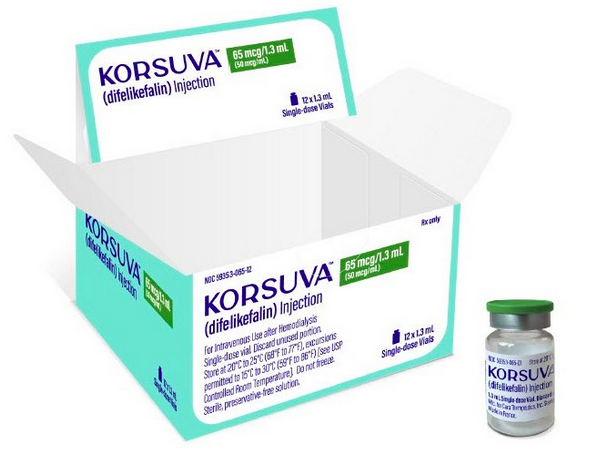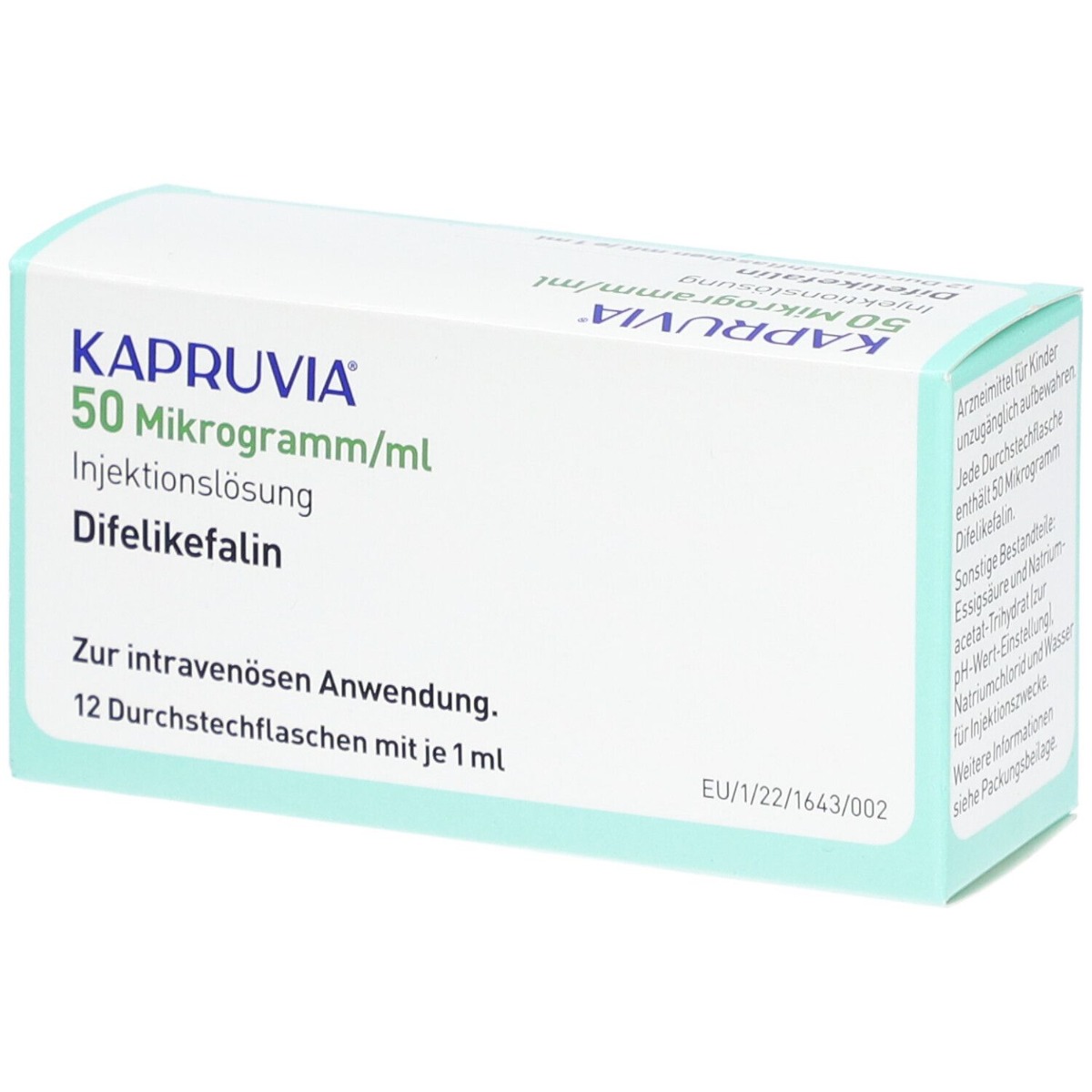New Pruritus treatments 2024
New Pruritus Treatments 2024
Pruritus, commonly known as itch, is an uncomfortable, irritating sensation that elicits the desire to scratch the affected area. It can occur as a result of various underlying conditions, ranging from dry skin and eczema to more complex systemic diseases such as liver disease, kidney failure, and thyroid disorders. Pruritus can also be idiopathic, meaning it arises without a known cause. Chronic pruritus, which persists for more than six weeks, can significantly impair quality of life, leading to sleep disturbances, anxiety, and depression. The intensity of the itch can vary, and it may be localized to a specific area or generalized across the body.
When considering treatment options for pruritus, the underlying cause of the itch should be identified and treated accordingly. For symptomatic relief, moisturizers and topical corticosteroids are commonly used to alleviate mild to moderate itching. Antihistamines can be effective, particularly if the pruritus is allergy-related or has an inflammatory component. In cases of more severe or refractory pruritus, physicians may prescribe off-label use of medications such as gabapentin, pregabalin, or certain antidepressants like mirtazapine and selective serotonin reuptake inhibitors (SSRIs). It is crucial for patients to consult with their healthcare provider to determine the most appropriate treatment plan based on their specific condition and medical history.

Treatment options
| Treatment option | Estimated cost | Efficacy | Eligibility |
|---|---|---|---|
| Topical Corticosteroids | $5 - $50 | High for inflammation-induced pruritus | Widely eligible, short-term use |
| Antihistamines (e.g., diphenhydramine, cetirizine) | $1 - $20 | Moderate for histamine-mediated pruritus | Widely eligible, caution in elderly |
| Emollients and Moisturizers | $10 - $30 | Variable, generally supportive care | Widely eligible |
| Phototherapy | $100 - $500 | High for certain conditions like psoriasis | Eligibility depends on specific condition |
| Korsuva (difelikefalin) | $2,000 - $3,000 | High for hemodialysis-related pruritus | Limited to hemodialysis patients with moderate to severe pruritus |
| Systemic Corticosteroids | $20 - $100 | High for systemic inflammatory conditions | Short-term use, contraindicated in certain conditions |
| Opioid Receptor Antagonists (e.g., naltrexone) | $30 - $200 | Moderate for certain types of pruritus | Eligibility depends on patient's opioid use history |
| Immunosuppressants (e.g., cyclosporine) | $200 - $1,000 | High for autoimmune-induced pruritus | Eligibility requires careful patient selection due to side effects |
| Experimental Treatments (e.g., Janus kinase inhibitors) | $2,000 - $4,000 | Varies, promising in clinical trials | Limited to clinical trials or off-label use |
Treatments options in detail
Topical Treatments
Topical treatments are often the first line of defense against pruritus, especially when the itching is localized. Moisturizers are commonly used to hydrate the skin and repair the skin barrier. Over-the-counter (OTC) options include lotions and creams containing ingredients such as glycerin, lactic acid, or urea. Topical corticosteroids are also frequently prescribed to reduce inflammation and itching. These range from low-potency hydrocortisone creams to more potent preparations for severe or resistant cases. Other topical agents include calcineurin inhibitors, such as tacrolimus and pimecrolimus, which are particularly useful in atopic dermatitis. Antihistamine creams or lotions can help alleviate itching, although oral antihistamines are more commonly used.
Oral Antihistamines
Oral antihistamines are widely used to treat pruritus associated with allergic reactions. First-generation antihistamines, like diphenhydramine, have sedative properties that can be beneficial for nocturnal itching. However, due to their sedative effects, they are not ideal for daytime use. Second-generation antihistamines, such as cetirizine, loratadine, and fexofenadine, are preferred for daytime use as they are less sedating. While antihistamines are effective for histamine-mediated pruritus, they may not be as effective for non-histaminergic pruritus.
Systemic Treatments
For more generalized pruritus or cases that do not respond to topical treatments, systemic medications may be necessary. These include oral corticosteroids, which are effective but can have significant side effects with long-term use. Other systemic options include gabapentin or pregabalin, which are anticonvulsants that can help manage neuropathic itch. Selective serotonin reuptake inhibitors (SSRIs) and tricyclic antidepressants (TCAs) have also been used to treat pruritus, particularly when it is associated with psychological factors.
Phototherapy
Phototherapy involves exposing the skin to specific wavelengths of light and is especially beneficial for patients with generalized pruritus, such as those with psoriasis or atopic dermatitis. Ultraviolet B (UVB) light is the most commonly used form of phototherapy and can be administered as narrowband or broadband UVB. UVA therapy, often in combination with a medication called psoralen (PUVA therapy), is another option. Phototherapy requires multiple sessions and is typically administered in a medical setting.
Opioid Receptor Antagonists
Opioid receptor antagonists, such as naltrexone and naloxone, can be effective in treating pruritus, particularly in cases related to systemic diseases like cholestasis or chronic kidney disease. These medications work by blocking the action of endogenous opioids that can induce itching. However, their use may be limited by side effects and the need for careful monitoring.
Korsuva (difelikefalin)
Korsuva (difelikefalin) is a novel medication that targets kappa opioid receptors and is used to treat moderate to severe pruritus in patients undergoing hemodialysis. It is a synthetic peptide that acts peripherally to reduce the sensation of itch without the central nervous system effects associated with other opioid medications. Korsuva has been approved by the FDA for this specific indication and represents a significant advancement in the treatment of uremic pruritus, a common and difficult-to-treat condition in patients with end-stage renal disease.
Bile Acid Sequestrants
Bile acid sequestrants, such as cholestyramine, colestipol, and colesevelam, are used off-label to treat pruritus associated with cholestasis. These medications bind bile acids in the intestine, reducing their reabsorption and serum levels, which may contribute to the sensation of itch. They are particularly used in conditions like primary biliary cholangitis and other forms of liver disease that result in bile acid accumulation.
Immunomodulators
Immunomodulators such as cyclosporine and methotrexate can be used for pruritus associated with inflammatory skin conditions. These medications suppress the immune system and can be effective in treating itch that is resistant to other therapies. However, due to their potential for causing serious side effects, they are generally reserved for severe cases and require close monitoring by a healthcare provider.
Experimental and Off-Label Treatments
Experimental treatments for pruritus are continuously being investigated. One area of research focuses on neurokinin-1 (NK-1) receptor antagonists, which block the action of substance P, a neuropeptide involved in the transmission of itch signals. Aprepitant is an NK-1 antagonist that is FDA-approved for preventing chemotherapy-induced nausea and vomiting but has been used off-label to treat severe pruritus.
Janus kinase (JAK) inhibitors are another class of drugs being explored for their anti-inflammatory and anti-pruritic effects. These medications, such as tofacitinib and baricitinib, are approved for rheumatologic conditions but are being studied for the treatment of chronic itch in various dermatologic conditions.
Thalidomide, an immunomodulatory drug, has shown some promise in treating pruritus associated with conditions like erythema nodosum leprosum. However, its use is limited by its teratogenicity and potential for causing neuropathy.
Botulinum toxin injections have been reported to reduce pruritus in localized areas, such as in notalgia paresthetica, by inhibiting the release of itch mediators from cutaneous nerves. However, more research is needed to establish their efficacy and safety for this indication.
Finally, cannabinoids, both natural and synthetic, are being studied for their potential to alleviate pruritus. Cannabinoids may modulate itch through their anti-inflammatory properties and interaction with the endocannabinoid system in the skin. While promising, their use is not yet widely accepted and remains a subject of research.
Conclusion
The treatment of pruritus is multifaceted and should be tailored to the underlying cause, severity, and individual patient needs. While many standard treatments are available and widely used, ongoing research continues to expand the options with new and off-label therapies. Healthcare providers should stay informed about the latest developments in pruritus treatment to offer the most effective care for their patients.
Symptoms
Common Symptoms of Pruritus
Pruritus, commonly known as itch, is a sensation that provokes the desire to scratch. The most common symptom of pruritus is the itching sensation itself, which can vary in intensity from mild to severe. Itching can be localized, affecting only a small area of the skin, or generalized, occurring over the whole body. Patients often describe the sensation as irritating, distracting, and sometimes even unbearable.
In response to the itching, scratching is a frequent symptom. While scratching may temporarily relieve the itch, it can also lead to further skin damage and even infection if the skin is broken. Chronic scratching can result in thickened, leathery skin, known as lichenification.
Redness or erythema is another common symptom associated with pruritus. The affected area may appear redder than the surrounding skin due to inflammation or as a result of persistent scratching.
Rashes can also accompany pruritus. These can take various forms, such as hives (urticaria), eczematous dermatitis, or other skin lesions. The appearance of the rash can provide clues as to the underlying cause of the itch.
Some individuals may experience dry, cracked, or scaly skin alongside pruritus, particularly if the itch is related to a skin condition such as eczema or psoriasis. Dry skin itself can be a cause of itching, as it is less effective at maintaining moisture and may become irritated more easily.
Secondary Symptoms of Pruritus
Beyond the immediate symptoms of itching and skin changes, pruritus can lead to secondary symptoms. Sleep disturbances are common, as intense itching can keep individuals awake at night or wake them from sleep. This can lead to fatigue and irritability due to lack of rest.
Anxiety and depression can also be secondary symptoms of chronic pruritus. The persistent discomfort and the social and cosmetic implications of visible skin lesions can significantly impact a person's quality of life and mental health.
Changes in skin pigmentation may occur with chronic pruritus. Hypopigmentation (lighter skin) or hyperpigmentation (darker skin) can result from repeated scratching or inflammation.
Excoriation, or skin picking, can lead to open sores and crusting on the skin. This behavior, often a response to the itch, can increase the risk of secondary bacterial infections.
Systemic Symptoms Related to Pruritus
In some cases, pruritus may be a symptom of an underlying systemic condition. When pruritus is related to systemic disease, other non-dermatological symptoms may be present. For instance, pruritus associated with liver disease may be accompanied by jaundice (yellowing of the skin and eyes), fatigue, and abdominal pain.
When pruritus is linked to kidney failure, patients may experience symptoms such as nausea, vomiting, a decrease in urine output, and a metallic taste in the mouth. These symptoms reflect the broader impact of the kidney disease on the body's ability to filter and eliminate waste.
In individuals with thyroid disorders, symptoms such as weight changes, sensitivity to temperature, and changes in heart rate may occur alongside pruritus. An overactive or underactive thyroid can lead to changes in skin texture and moisture levels, contributing to the sensation of itch.
For those with hematologic conditions like polycythemia vera or lymphoma, pruritus may present with symptoms such as unexplained weight loss, night sweats, and fatigue. These systemic symptoms are indicative of the underlying blood disorder and require thorough medical evaluation.
Neuropathic Pruritus Symptoms
Neuropathic pruritus is a type of itch caused by damage to the nervous system. This form of pruritus can be particularly challenging to manage, as the itch may not respond to traditional anti-itch treatments. Patients may describe the sensation as burning, stinging, or similar to the feeling of insects crawling on the skin.
Neuropathic pruritus often occurs in a specific area and may be associated with other neurological symptoms such as numbness, tingling, or pain. Conditions such as shingles (postherpetic neuralgia) or diabetic neuropathy can lead to this type of pruritus.
Psychogenic Pruritus Symptoms
Psychogenic pruritus is itching that is primarily caused by psychological factors, such as stress or anxiety. While the itch is very real to the patient, there may be no visible signs on the skin. This type of pruritus can be difficult to diagnose and treat because it often requires addressing the underlying psychological issue.
Patients with psychogenic pruritus may exhibit symptoms of their psychological distress, such as nervousness, stress-related habits (e.g., nail-biting), or signs of a mood disorder. Treatment often involves a multidisciplinary approach, including psychological support or psychiatric care.
Environmental and Allergic Pruritus Symptoms
Pruritus can also be triggered by environmental factors or allergens. Contact with certain plants (like poison ivy), chemicals, soaps, and other substances can lead to contact dermatitis, which is characterized by itching, redness, and sometimes blistering.
Allergic reactions, whether to food, medications, or insect stings, can cause pruritus along with other symptoms such as swelling, redness, and hives. In severe cases, anaphylaxis can occur, which is a life-threatening reaction that requires immediate medical attention.
In summary, pruritus encompasses a range of symptoms from the primary sensation of itch to secondary skin changes and systemic effects. The presentation of pruritus can vary widely depending on the underlying cause, and effective management often requires addressing both the symptoms and their root cause.
Cure
Understanding the Cure for Pruritus
Pruritus, commonly known as itch, is a sensation that elicits the desire or reflex to scratch. It is important to note that pruritus itself is not a disease but a symptom that can be associated with a variety of conditions, ranging from skin disorders to systemic illnesses. Therefore, the concept of a 'cure' for pruritus is inherently linked to addressing the underlying cause of the itch.
When pruritus is caused by a specific skin condition, such as eczema, psoriasis, or dermatitis, the treatment focuses on managing the skin disorder. Topical therapies like corticosteroids, calcineurin inhibitors, and emollients are commonly used to control inflammation and moisturize the skin, which can alleviate itching. In cases where these conditions are chronic, the term 'cure' may not be appropriate, but effective management and control of symptoms, including pruritus, is possible.
In instances where pruritus is a symptom of systemic diseases, such as liver or kidney disease, managing the primary illness can lead to a reduction or resolution of the itch. For example, cholestasis-induced pruritus may be managed with medications like cholestyramine, rifampicin, or naltrexone, which are used to address the underlying bile acid abnormalities. Similarly, pruritus associated with chronic kidney disease may be reduced with treatments like gabapentin or ultraviolet light therapy.
For idiopathic pruritus, where no underlying cause is identified, the approach to 'cure' involves symptomatic relief and may include antihistamines, phototherapy, or antidepressants, such as selective serotonin reuptake inhibitors (SSRIs) or tricyclic antidepressants, which have been found to have antipruritic effects. In these cases, while the pruritus may not be 'cured' in the traditional sense, the symptoms can often be effectively managed.
Recent advances in understanding the pathophysiology of pruritus have led to the development of new therapeutic agents. One such example is the use of biologics, which are targeted therapies designed to interfere with specific immune pathways involved in the itch response. Dupilumab, a monoclonal antibody approved for eczema, has shown efficacy in reducing pruritus in patients with moderate-to-severe disease.
Another promising area of research is the use of neurokinin-1 receptor antagonists, which block the action of substance P, a neuropeptide involved in the transmission of the itch sensation. Aprepitant, traditionally used as an antiemetic, has shown effectiveness in treating pruritus of various etiologies in off-label use.
Opioid receptor modulation is another therapeutic strategy for pruritus. Mu-opioid receptor antagonists, such as naltrexone, have been used to treat pruritus associated with systemic conditions. Conversely, kappa-opioid receptor agonists are being investigated for their potential antipruritic properties.
It is also critical to consider lifestyle and home remedies that can complement medical treatments for pruritus. Measures such as keeping the skin moisturized, avoiding irritants, using mild soaps, and applying cool compresses can provide relief. Behavioral modifications, like reducing stress and avoiding scratching, can also be beneficial in managing pruritus.
While there is no universal 'cure' for pruritus, the multifaceted approach to its management can lead to significant improvement in quality of life for affected individuals. It is essential for patients to work closely with their healthcare providers to identify the underlying causes of pruritus and develop a personalized treatment plan. Ongoing research into the mechanisms and treatment of pruritus continues to expand the range of therapeutic options available, offering hope for more effective management and potential cures for the various conditions associated with this challenging symptom.
Access Pruritus medicines today
If Pruritus medicines are not approved or available in your country (e.g. due to supply issues), you can access them via Everyone.org.
How Everyone.org works

Make an enquiry
Choose the medicine you want to access, answer a couple of questions, and upload your prescription to speed things up. We’ll get back to you within 24 hours.


Make an enquiry
Choose the medicine you want to access, answer a couple of questions, and upload your prescription to speed things up. We’ll get back to you within 24 hours.


Breeze through the paperwork
We'll guide you through the required documents for importing unapproved medicine, ensuring you have all the necessary information.


Get a personalized quote
We’ll prepare a quote for you, including medicine costs and any shipping, administrative, or import fees that may apply.


Receive your medicine
Accept the quote and we’ll handle the rest - sourcing and safely delivering your medicine.

Some text on this page has been automatically generated. Speak to your physician before you start a new treatment or medication.
Let's talk
If you have any questions, call us or send us a message through WhatsApp or email:
Contact us




